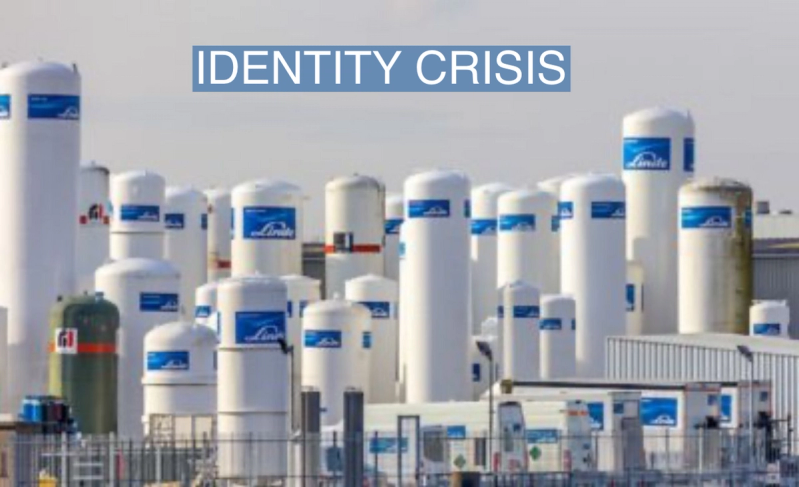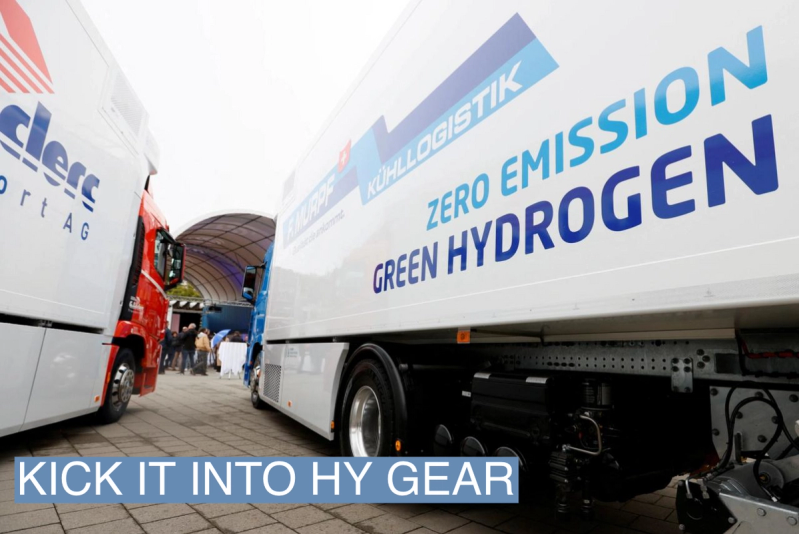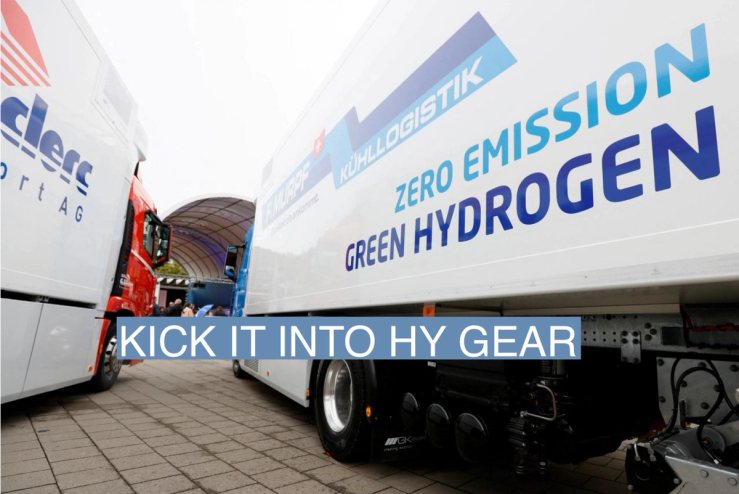The News

The hottest commodity here at CERAWeek in Houston, the world’s biggest oil and gas conference, isn’t a fossil fuel.
“All anyone wants to talk about is hydrogen,” Jeff Gustavson, president of Chevron New Energies, told me. “Its promise in the decades to come is massive.”
Hydrogen gas has been touted by dozens of energy executives and government officials as a low- or zero-carbon panacea to replace oil and gas in heavy-duty vehicles and industrial facilities that can’t run directly on batteries or renewable electricity. But its viability as a genuine climate solution now rests not with oil executives or engineers, but in the hands of Internal Revenue Service bureaucrats, who are expected to make a multi-billion-dollar decision by this summer about how to administer a lucrative new tax credit embedded in the Inflation Reduction Act.
Tim’s view
The U.S. Treasury Department may need to choose between climate integrity today and a high-stakes gamble that the hydrogen industry can decarbonize in the future. At its core is a debate over what “green” hydrogen really is.
The maximum value of the new tax credit, $3 per kilogram, is available only for hydrogen with the lowest possible carbon footprint. In theory, this should apply to hydrogen manufactured through “green electrolysis,” in which renewable electricity is used to separate hydrogen molecules from water. Up to now, nearly all hydrogen is instead “gray” or “blue” — derived from natural gas, a process that could negate its climate benefit: Under the IRA this would qualify for a much lower credit.
Deciding which projects qualify as green is less straightforward than it may seem. Imagine a producer plugs an electrolyzer into the grid, and buys certificates from a wind or solar farm to show that the hydrogen was made using clean power. That clean power is now unavailable to other users, which may cause the grid operator to ramp up a fossil fuel power plant to compensate. Should that count against the hydrogen’s carbon footprint?
The nascent hydrogen industry is fiercely divided on this question. Environmental groups and some entrepreneurs argue that truly “green” hydrogen should need to match its electricity use in real-time to renewable sources that were built explicitly for that purpose, or else billions of taxpayer dollars could be poured into an ostensible climate solution that actually increases net emissions.

Others, including some oil majors and utilities, argue that with looser rules, electrolysis-derived hydrogen will still be cleaner than that made from gas. They say the greatest imperative should be to use the tax credit to scale the industry and make it cost-competitive with fossil fuels. Today, electrolyzer hydrogen is roughly three times the price of natural gas in Europe and 15 times the price in the U.S., but the green tax credit is high enough to drastically change the economics.
“If the regulations are too tight, no one will qualify, and it will limit the ability of this industry to get moving,” Andy Marsh, CEO of fuel cell company Plug Power, said in an interview.
Know More
The hydrogen market was once the exclusive domain of a few niche producers that supplied hydrogen for use in refining oil and manufacturing fertilizer. Now it’s suddenly crowded with companies — from oil majors to startups — looking to make it, pipeline companies lining up to move it, and fuel cell companies with the hardware to make it usable. Energy services firm Baker Hughes expects hydrogen to become a $30 billion global market by 2030, and some analysts expect it to provide 12% of global energy by 2050.
Regardless of where the IRS draws the lines for green hydrogen, most hydrogen will continue to have a significant carbon footprint for the next decade or so. Today 98% of global hydrogen production is so-called “gray” hydrogen, made from natural gas. Less than 1% is made by electrolysis.
However it’s made, even many environmental stalwarts agree that it’s probably worthwhile to start building out a distribution network and customer base now with whatever hydrogen is available, and swap in more green hydrogen later as its economics improve. Even with the tax credit, green hydrogen suffers from a chicken-and-egg problem: Without established buyers (the owner of a fuel cell trucking fleet, for example), green hydrogen producers can’t get financing to scale up. But without more hydrogen on the market, potential buyers won’t invest in the necessary hardware to use it.
Eventually, hydrogen is likely to become a commodity traded like oil and gas (rather than a product sold in a fixed contract between one buyer and one seller), and trading houses like Trafigura are exploring how to get involved. Green hydrogen could come at a premium. But for that to happen, the industry needs to replace the vague, confusing rainbow of hydrogen varieties with a uniform, science-based method for rating the carbon intensity of each hydrogen producer. The Open Hydrogen Initiative, a group backed by the U.S. Department of Energy and a number of oil companies, is working on that kind of system now.
Quotable
“There’s a reasonable argument that we should just get started [with lax tax credit standards], and get some economies of scale, and we’ll break a few eggs along the way. But the IRA is a 10-year program, and that’s a lot of eggs to break,” Raffi Garabedian, CEO of electrolyzer equipment company Electric Hydrogen, said in an interview. “I worry it could shutter the industry when NGOs recognize what’s being done and call the industry to task.”
Room for Disagreement
Oil and gas companies are focused on “blue” hydrogen, made from facilities equipped with carbon capture, which today accounts for just 1% of gas-derived hydrogen. But studies have shown that if the carbon capture is powered by electricity itself made from natural gas, the end product may be worse for the climate than just sticking to fossil fuels in the first place.
All producers of hydrogen also need to better police leaks, not just for safety reasons but because hydrogen, although not a fossil fuel, can contribute to warming through the formation of water vapor and by extending the lifespan of atmospheric methane, said Mark Brownstein, senior vice president for the energy transition at the Environmental Defense Fund, an advocacy group.
“Hydrogen only has a legitimate place in the low-carbon economy if the industry can prove that it can genuinely be low-carbon,” he said. “If there are a lot of leaks, those are material to the climate crisis.”
The View From Mauritania
Some electrolyzer companies envision green hydrogen as a globally traded commodity that would essentially carry energy from places with cheap renewable electrons — countries with a lot of sun and open space like Morocco, Namibia, Saudi Arabia, and Australia are prime export candidates — to places with high natural gas costs and tight climate targets, namely Europe. On Wednesday a group of project developers from Europe and the Middle East signed a $34 billion deal to build such a project in Mauritania, to be operational by 2028.
Notable
- Last month Europe settled its own debate about defining green hydrogen, with relatively lax rules for power sourcing that get tighter over time. After some hesitation, Germany said this week it’s willing to import hydrogen made using nuclear power from France.


